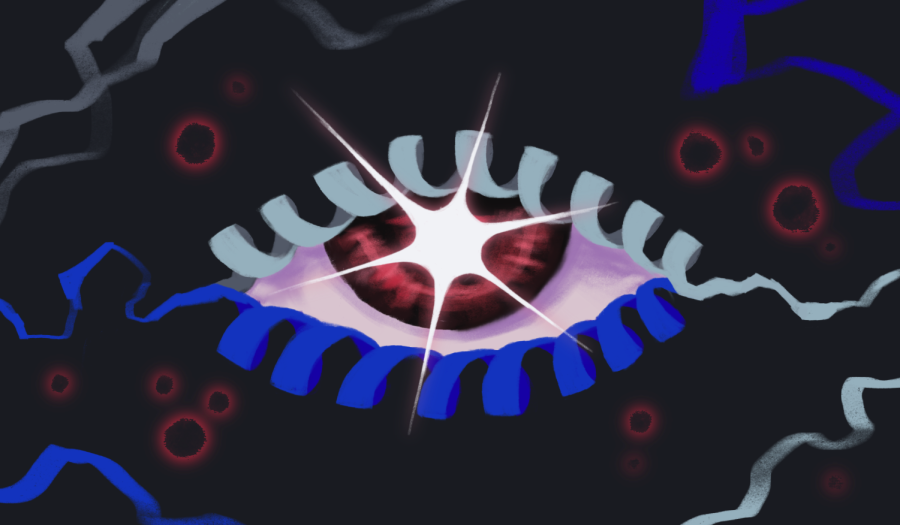Vertebrate Night Vision: An Adaptation Made Possible by Bacteria
Photo by Angela Liang/ UCSD Guardian
Apr 30, 2023
Researchers with the UC San Diego department of molecular biology recently traced the evolution of a key vertebrate eye protein to bacteria. More specifically, they found that the gene for vertebrate interphotoreceptor retinoid-binding protein was acquired through interdomain horizontal gene transfer from bacteria over 500 million years ago.
In an article published in PNAS, researchers from Dr. Matthew Daugherty’s lab show that IRBP was acquired by the ancestor of all vertebrates — organisms with a backbone, including fish, amphibians, birds, and mammals — via iHGT.
Horizontal gene transfer is the transfer of genetic information from one organism to another without the means of reproduction. HGT is a well-known way for bacteria to share genes with each other and adapt to their environments. However, iHGT, or HGT between different branches of life, is quite rare. In fact, there is currently speculation as to how a bacterial gene could be transferred to a vertebrate ancestor.
IRBP plays a critical role in the functioning of the vertebrate eye. In invertebrates, organisms without a backbone, light is sensed using retinoids. A specific wavelength of light changes the shape of the retinoid, allowing it to sense light. For the retinoid to be regenerated to the light-sensing form, it must be hit with a different wavelength of light. The process of light sensing and regeneration of receptors occurs in the same cell.
In the photoreceptor cells of the vertebrate eye, light also changes the shape of retinoids, allowing for light to be sensed. Once the retinoid’s shape is changed and can no longer sense light, IRBP shuttles it to retinal pigment epithelium cells where the light-sensing retinoid can be regenerated. IRBP serves as the go-between that transfers retinoids between photoreceptor and retinal pigment epithelium cells. As the shuttle, IRBP contributes to the division of light sensing and retinoid regeneration.
The separation of light sensing and regeneration means that light is not required to regenerate light-sensing retinoids. This adaptation helps vertebrates see in low light conditions, as any visible light is devoted to sensing instead of sensing and regenerating.
IRBP is a very important part of vertebrate vision. Mutation of IRBP in humans can result in retinitis pigmentosa and retinal dystrophy, which can both lead to blindness.
The research on IRBP highlights iHGT as an underappreciated path for evolution. Most of us think of evolution as a process through which genes are inherited vertically from parents and changed and modified along the way.
However, Daugherty notes, “This is a case where an entirely new genetic material can have this massive consequence on a given evolutionary lineage like vertebrates. Suddenly, there is this new genetic material that doesn’t exist in the ancestral species or sister species. That’s just going to change the entire evolutionary trajectory.”
The existence of iHGT means that there may still be mysteries out there relating to how certain functions in vertebrates evolved. “Even in a system that has been studied incredibly well like the vertebrate eye, [there are] still potentially surprises about the evolutionary origin of these genes,” Daugherty said.
The lead author on the paper, Chinmay Kalluraya is a former UCSD undergraduate student and is now a graduate student at MIT.
















